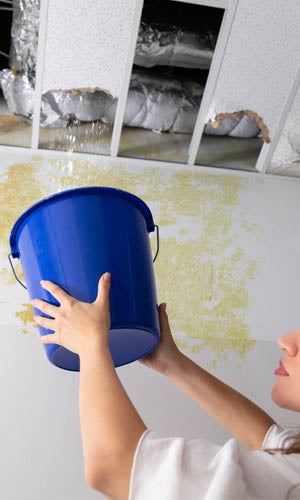We have discovered this article relating to Leaking water lines down the page on the web and accepted it made sense to share it with you over here.

Early discovery of leaking water lines can alleviate a potential catastrophe. Some little water leaks may not be noticeable.
1. Examine the Water Meter
Every residence has a water meter. Checking it is a guaranteed manner in which helps you find leakages. For starters, shut off all the water resources. Guarantee nobody will certainly purge, use the tap, shower, run the cleaning machine or dishwashing machine. From there, most likely to the meter and watch if it will alter. Given that no one is using it, there must be no activities. That suggests a fast-moving leakage if it relocates. If you find no adjustments, wait a hr or 2 and check back again. This implies you might have a sluggish leakage that can also be below ground.
2. Check Water Consumption
Evaluate your water bills and track your water consumption. As the one paying it, you should notice if there are any discrepancies. If you find sudden changes, despite your consumption being the same, it means that you have leakages in your plumbing system. Bear in mind, your water costs must drop under the exact same variety monthly. An unexpected spike in your bill indicates a fast-moving leakage.
On the other hand, a stable increase every month, despite having the exact same practices, shows you have a slow-moving leakage that's also gradually escalating. Call a plumber to thoroughly examine your home, especially if you feel a cozy location on your floor with piping beneath.
3. Do a Food Coloring Test
When it comes to water consumption, 30% comes from commodes. If the color somehow infiltrates your dish throughout that time without flushing, there's a leak in between the tank as well as dish.
4. Asses Outside Lines
Don't fail to remember to examine your exterior water lines also. Should water seep out of the connection, you have a loose rubber gasket. One small leak can waste lots of water as well as increase your water costs.
5. Analyze the situation and inspect
Property owners ought to make it a practice to examine under the sink counters and also also inside closets for any kind of bad odor or mold and mildew development. These two red flags indicate a leak so punctual focus is called for. Doing regular assessments, even bi-annually, can save you from a significant trouble.
A lot more significantly, if you understand your home is already old, maintain a watchful eye on your heating systems, tubes, pipelines etc. Check for discolorations and damaging as a lot of home appliances as well as pipelines have a life expectancy. They will additionally naturally deteriorate as a result of tear and put on. If you presume leaking water lines in your plumbing system, do not wait on it to escalate. Call a specialist plumber as soon as possible so you don't wind up with an awful mess in your home.
Early discovery of dripping water lines can reduce a possible disaster. Some little water leaks might not be visible. Checking it is a proven way that aids you find leaks. One little leak can lose heaps of water and increase your water expense.
If you think dripping water lines in your plumbing system, do not wait for it to rise.
WARNING SIGNS OF WATER LEAKAGE BEHIND THE WALL
PERSISTENT MUSTY ODORS
As water slowly drips from a leaky pipe inside the wall, flooring and sheetrock stay damp and develop an odor similar to wet cardboard. It generates a musty smell that can help you find hidden leaks.
MOLD IN UNUSUAL AREAS
Mold usually grows in wet areas like kitchens, baths and laundry rooms. If you spot the stuff on walls or baseboards in other rooms of the house, it’s a good indicator of undetected water leaks.
STAINS THAT GROW
When mold thrives around a leaky pipe, it sometimes takes hold on the inside surface of the affected wall. A growing stain on otherwise clean sheetrock is often your sign of a hidden plumbing problem.
PEELING OR BUBBLING WALLPAPER / PAINT
This clue is easy to miss in rooms that don’t get much use. When you see wallpaper separating along seams or paint bubbling or flaking off the wall, blame sheetrock that stays wet because of an undetected leak.
BUCKLED CEILINGS AND STAINED FLOORS
If ceilings or floors in bathrooms, kitchens or laundry areas develop structural problems, don’t rule out constant damp inside the walls. Wet sheetrock can affect adjacent framing, flooring and ceilings.
https://www.servicemasterbyzaba.com/blog/how-to-detect-water-leakage-in-walls/

I discovered that post about Top leak detection hacks when doing a search on the web. Appreciated our review? Please share it. Let somebody else discover it. Thank you so much for taking the time to read it.